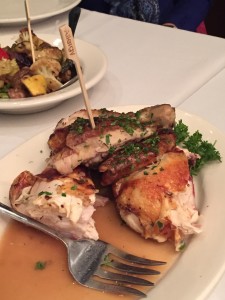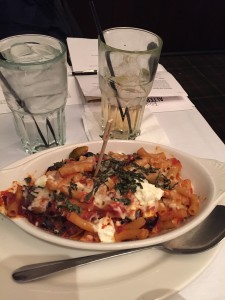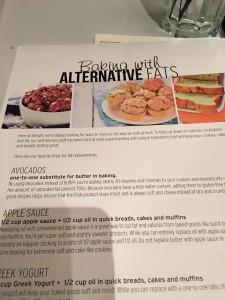- Rotisserie Chicken
- Baked Ziti
- Handout
Gluten-free baking in past years can be compared to trying to mix highly combustible materials. It has required such an accomplished hand utilizing a precise mix of ingredients to achieve an edible, tasty result. It therefore has been viewed as a completely intimidating task that many would rather steer clear from. However, with new products coming on the market each day, gluten-free baking might finally be more approachable for the amateur.
I recently attended a gluten-free baking class hosted by Delight editor Vanessa Maltin Weisbrod. This particular event was sponsored by the Children’s National Hospital to raise awareness for their Celiac Disease Program and was kindly hosted at Wildfire Restaurant in Tyson’s. As usual, the food was fantastic and was accompanied with a surplus of great information. I would definitely consider the night a huge success.
I have to say there is no one who is better informed about gluten-free cooking, baking or products than Vanessa. My head was spinning by the end of the evening, but I left feeling like I could conquer the world in my kitchen going forward. She provided us with slide after slide explaining the components of gluten-free flour blends and why certain flours are better for different kinds of baking rather than others. She also gave us tips on different substitute fats you could use to add moisture to your baked goods. My main takeaway is it is crucial to educate yourself about your ingredients and their consistencies and what other alterations you might need to make to a recipe to compensate.
For instance, I learned that coconut flour is a great flour to use for baked goods, but you may need to use less sugar and add additional liquid for best results. I also learned the benefits of sorghum flour and how it has a smoother texture perfect for use while making pancakes and flatbreads as well as baked goods with a more bread-like consistency.
Tapioca flour is apparently great as an additive for binding in gluten-free baking and works well to create crisp crusts and as a thickener for sauces. It has a sweet and starchy taste and is best combined with other flours like quinoa and brown rice flour. You should again use less sugar to compensate for the sweetness already present in the tapioca flour.
As for the all-purpose baking flours on the market, I learned that is really crucial to read the listing of flours included. For instance, some blends are higher in starchy flours like brown rice and tapioca. Others are a blend of high proteins like millet, chickpea and amaranth. You need to be mindful of these blends when you purchase because they will have an effect on the baked good you are creating. The best blends should have a decent balance of both the higher starch and high protein flours to keep your baked good moist. You also want to make sure it has either guar or xanthan gum included as a binder.
Overall, knowledge really is power. Gluten-free baking can be fun and rewarding once you become more comfortable. Instead of an intimidating challenge, I’ll now view it as an experiment to learn. For further information about the class I attended or future opportunities to attend yourself, feel free to contact me at Joyana [-at-] glutenfreenova [-dot-] com.
-JPM





